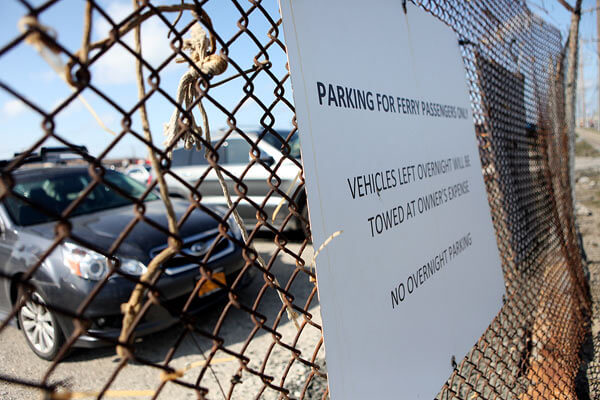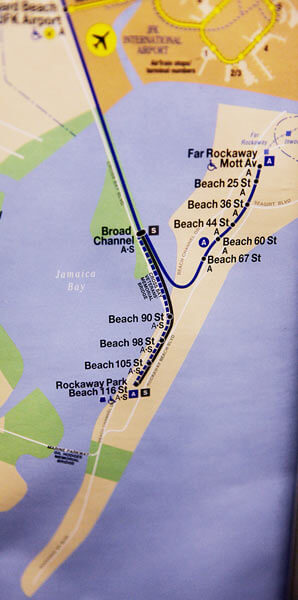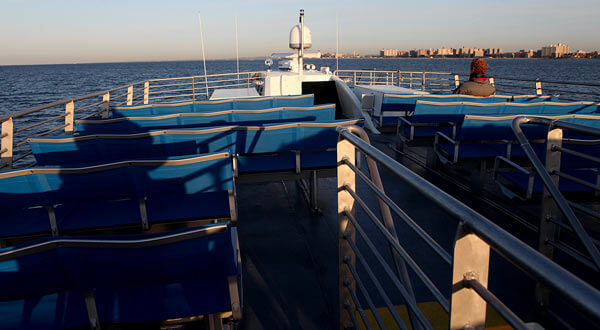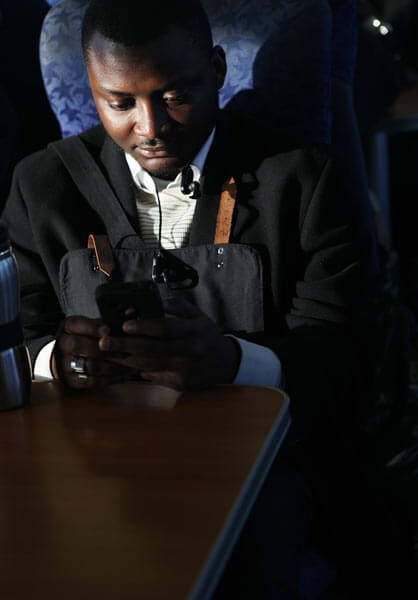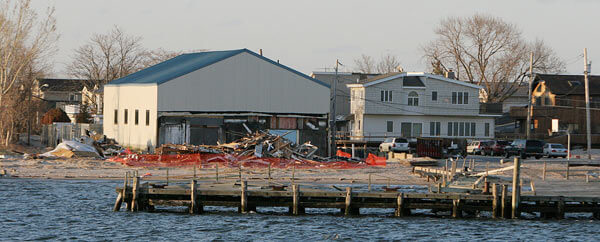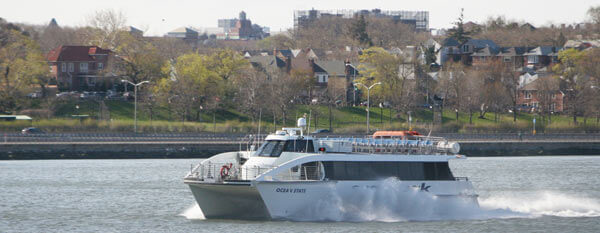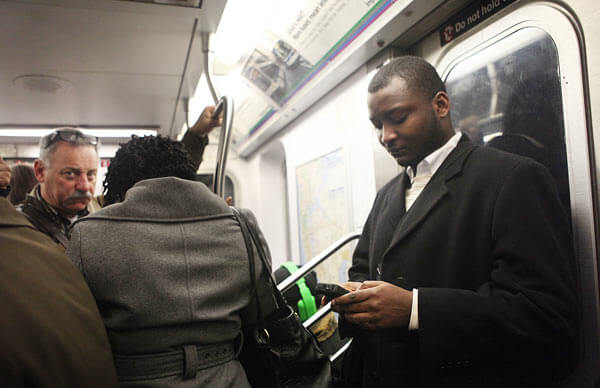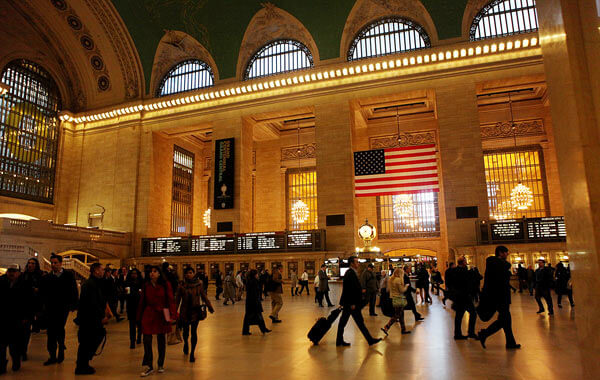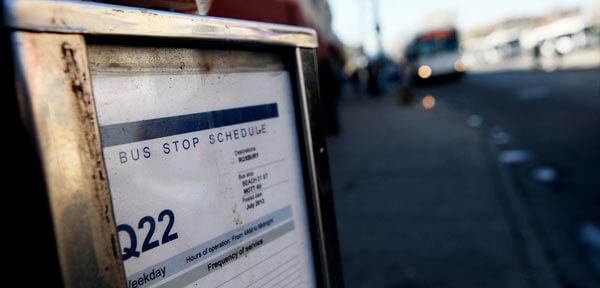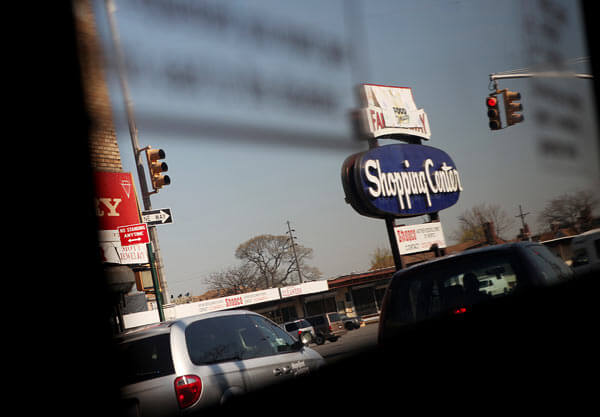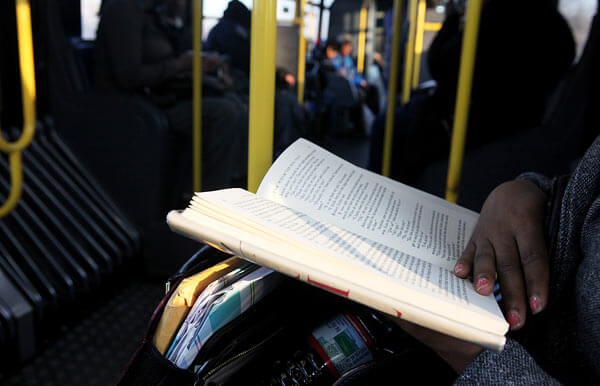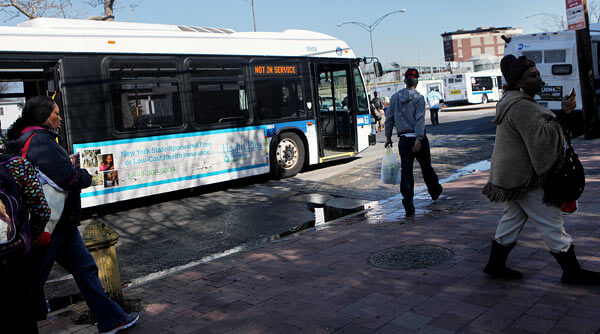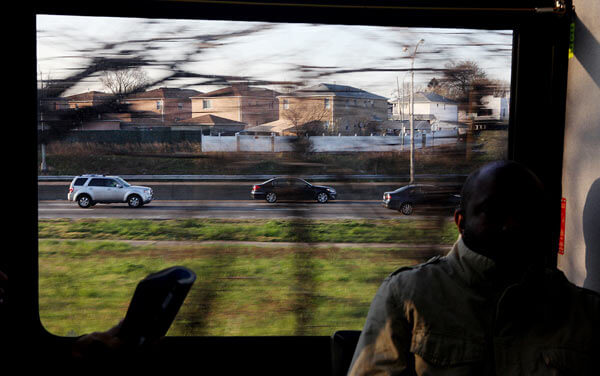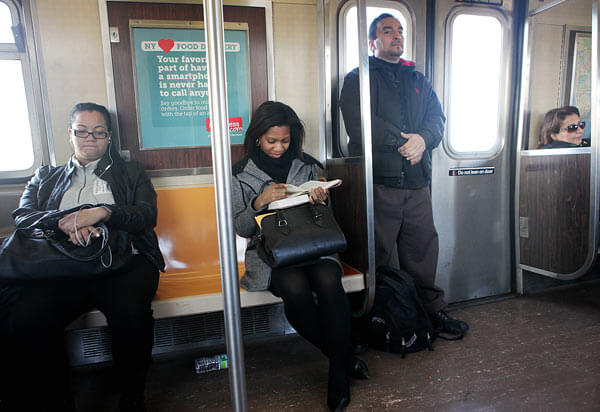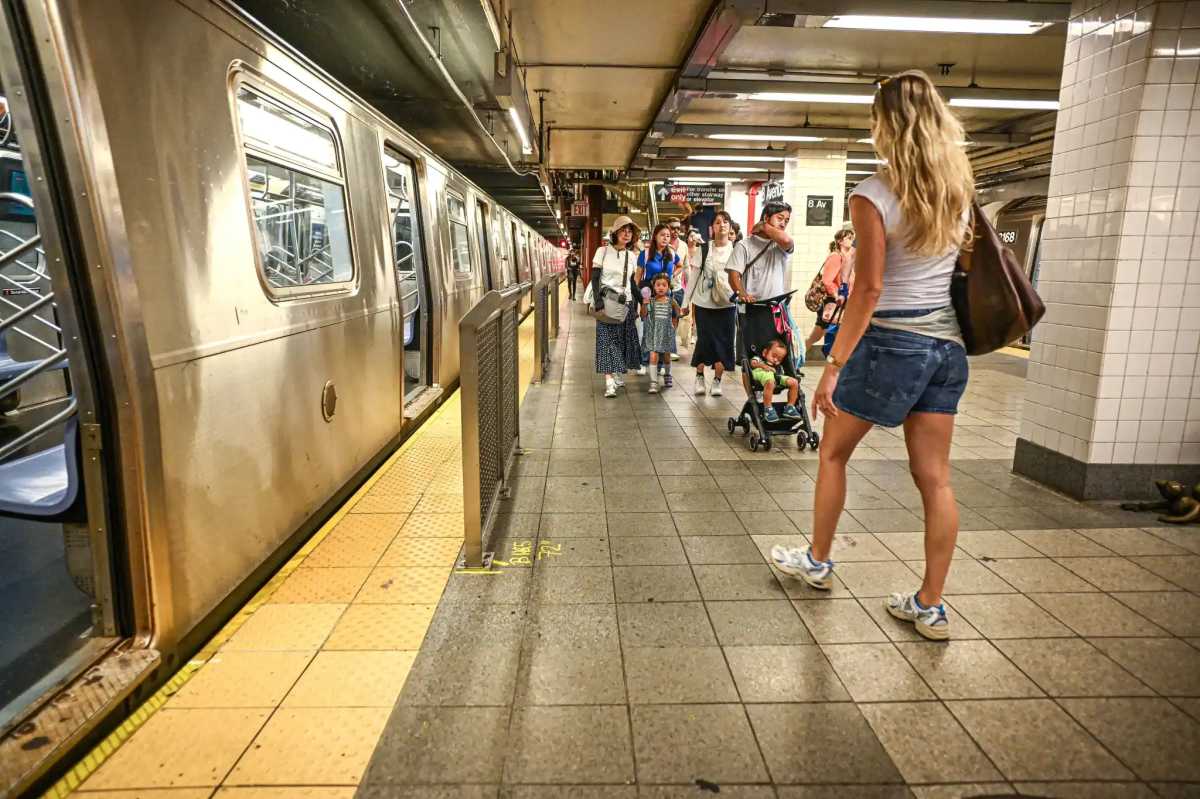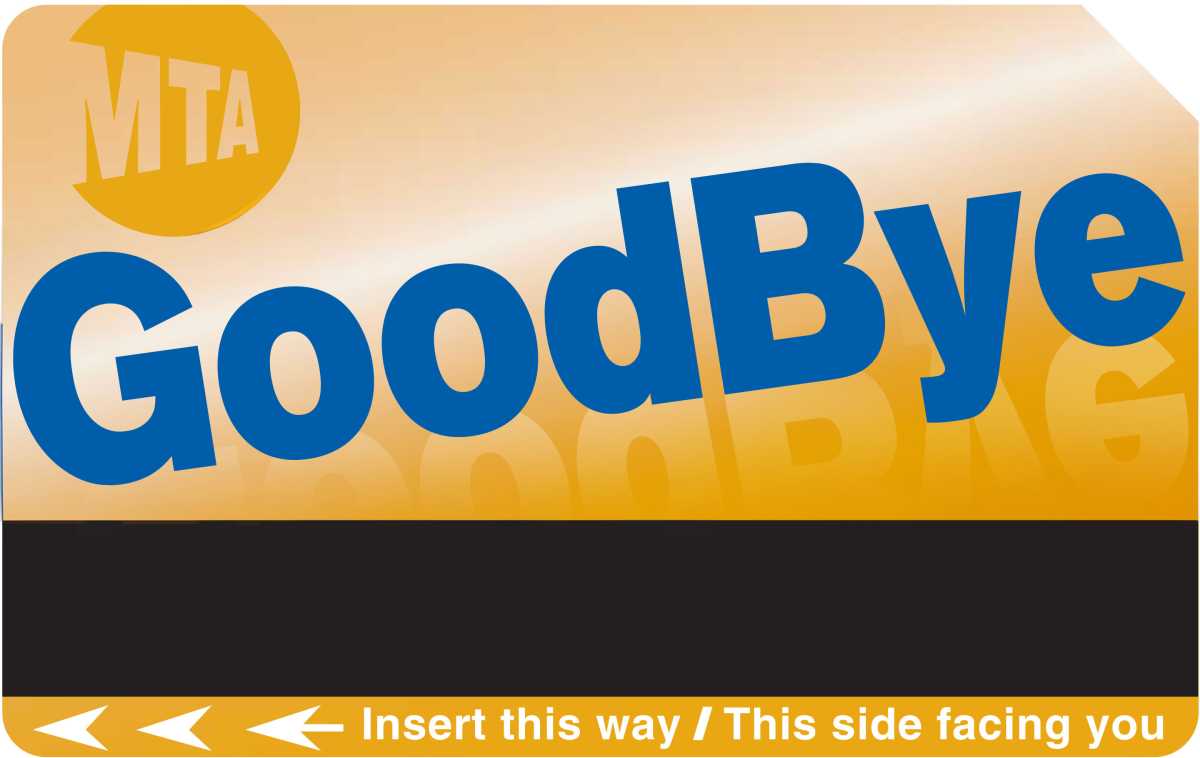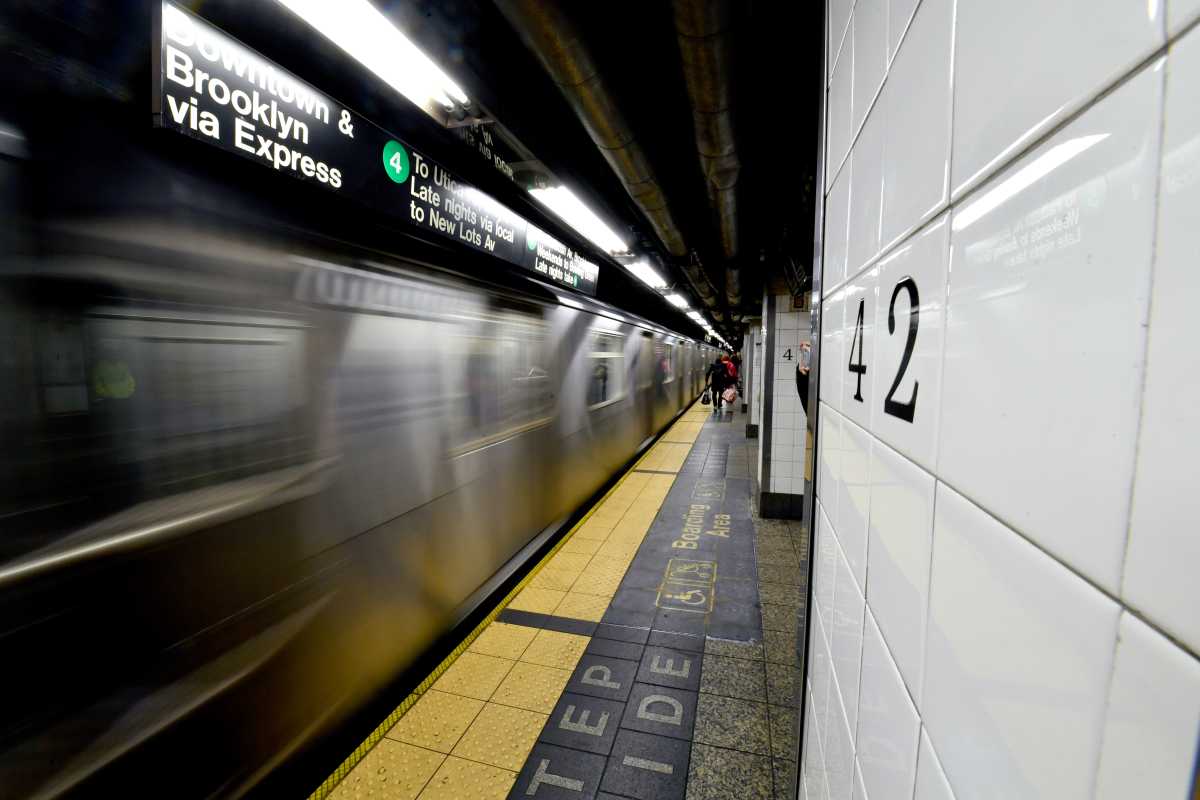By Christina Santucci
They live just 16 blocks apart, but Far Rockaway residents Devaney Brown and Abisoye Oloruntoba have chosen very different ways to commute to lower Manhattan in the six months following Superstorm Sandy. Subway service into and out of the Rockaways remains suspended as repairs are made on the A line to damage sustained during the storm.
Even before Sandy, both Brown and Oloruntoba spent at least two hours in transit, but over the past six months, their trips have required additional time and money without access to the A train.
The superstorm wreaked havoc on the line with breaches to the 70-foot-wide strip of land on which the tracks rest in two locations crossing over Jamaica Bay and left thousands of tons of debris in its wake. Transit officials estimate that the A train’s tracks were covered with about four feet of water.
With the Rockaway leg of the A train servicing about 30,000 riders a day before the storm, the MTA launched a shuttle bus service from the peninsula to the subway’s Howard Beach station in November.
Brown, a 23-year-old Borough of Manhattan Community College student, rises around 5 a.m. each morning and catches the Q22 bus one block away around 6:15 a.m. to Mott Avenue, where she then transfers to a shuttle bus to the Howard Beach A train station. The Q22 runs east-west within the Rockaways.
From there, it is 14 stops on the express A train, before she arrives at Chambers Street and walks four blocks to get to her 8 a.m. biology class. When the train is running local, there are 23 stops between Chambers Street and Howard Beach.
“Add an extra half hour onto your ride when the train is running local,” she said of the train trip, which normally takes about an hour.
To be sure she arrives on time, Brown should leave two hours for her commute, which some days she must make two or three times when she has travel back and forth for work at City Councilman Donovan Richards’ office in Far Rockaway.
She often arrives home from school after 11 p.m. as the MTA works to repair damage to the track bed, signal, power and communication systems half a year after the storm hit.
“I understand they [MTA officials] are doing everything they can, but I feel that more attention needs to be put on this,” she said during her Friday morning trip to class. “Every day is a hassle.”
Brown said commuters had to endure frigid temperatures waiting outdoors for the shuttle buses during the winter months, and on her trips home late in the evening, there would sometimes be up to a 30-minute delay before a Q22 would pull up on Mott Avenue as well as waits of between 10 and 20 minutes for shuttle buses at the Howard Beach station.
“When you’re coming from a long day, 9, 10 o’clock, and you are waiting right here and there are no shuttle buses, that’s the problem right there. No shuttle buses and there is a crowd of people,” she said. “When one actually does come, it’s ridiculous, overcrowding as usual.”
She worries about her nighttime travel time becoming even longer as the MTA moves more shuttle buses to peak times and reduces the total number of runs from 94 runs to 75 daily and by 40 percent on weekends, a change slated to go into effect last week.
Before Superstorm Sandy, Brown estimated her commute at about an hour from the Beach 36th Street stop to Chambers Street.
“[The A train] is the only train line we have in our community and that is so vital. It is our livelihood,” she said.
For Oloruntoba, the post-Sandy commute to and from his job as a software developer for J.P. Morgan takes close to the same amount of time as it did six months ago, but the route now costs him nearly twice as much and includes an eight-block walk.
He leaves his house each morning between 6:15 and 6:20 and drives about three miles to a free lot for riders of the Seatreak, which began collecting passengers at Beach 108th for the trip to Manhattan and Brooklyn in November following the storm.
“There are tricks to get past the traffic and try to make it on time,” he said, while crawling along Beach Channel Boulevard last week.
The ferry, which costs $2 each way, travels around the southern tip of Brooklyn and docks first at Pier 11/Wall Street, where Oloruntoba begins his 10-minute walk to the No. 4 at the Wall Street stop. Once on the train, it is about 15-20 minutes to travel four stops to Grand Central Terminal. He navigates through the throngs of other commuters at the major transit hub and walks another two blocks to his job.
“I opted to take the ferry even though that was slightly more expensive. It got me to work much quicker than the cheaper option,” he said.
Oloruntoba, 27, said he tested the commute via the shuttle bus to the A train in Howard Beach several times.
“The shuttle goes through the Five Towns area in Long Island to get to Howard Beach, and there is always traffic and congestion around this time,” he said. “After the storm, and I was back [in the Rockaways], my first attempt was to try that route but that didn’t work out too well because it was taking two plus hours easily, consistently.”
Normally, his morning travel route would be to get on the A train at Beach 44th Street in Far Rockaway and transfer to the No. 4 or 5 train at Fulton Street.
In total, Oloruntoba estimated that trip prior to Superstorm Sandy to be between an hour and 15 minutes and an hour and 45 minutes, if there were delays along the route.
He envisioned testing a different alternative before the A train is scheduled to be reinstated in June – the Q53 bus from Rockaway Park to Woodhaven Boulevard and Jamaica Avenue, where the J and Z trains stop.
“I should probably try that just to see how much it costs, how long it takes, just to weigh all of those to see which reduces the commute as much as possible without breaking the bank,” he said.
Reach editor Christina Santucci by e-mail at timesledgerphotos@gmail.com or by phone at 718-260-4589.

![SIX MONTHS LATER: Rockaway residents navigate morning commute after Sandy [With Video]](https://qns.com/wp-content/uploads/2013/04/farrockcommute_web_2013_04_29_q12_santucci_s.jpg?quality=51&w=408)
